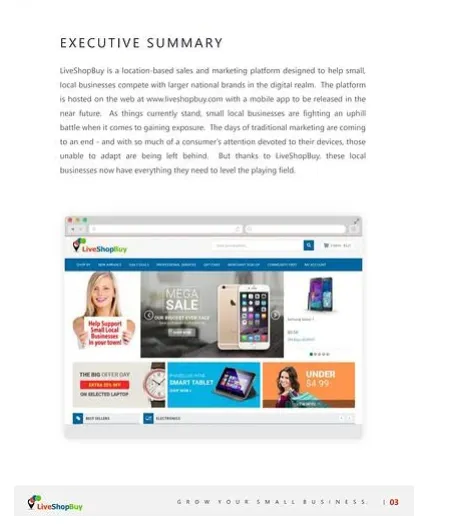Do you remember the first business plan you made? It could be with your school pal to open a restaurant or with your college buddy to start a design firm. No matter what stage of life you’re at, every new business needs a plan. It’ll help you lay the foundation.
A business plan comprises your company’s goals and intentions.
Here are the top strategic tips on writing a winning business plan to give life to your entrepreneurial dream.
Do I really need a business plan?
When evaluating how to structure a business, you might wonder:
- How do I convey my ideas clearly?
- How can I assess each approach?
- How can I effectively talk about the company’s goals?
- What will help me partner with potential companies?
- How do I make my business lucrative in a competitive market?
Investors rely on a comprehensive business plan to understand how you expect to make profits.
1. Research for strategic decisions
You can’t develop a business plan without investing time in research. To better understand market trends, consumer behavior, and competitor’s strategies, perform extensive research that a business plan mandates.
2. Vision through words
It helps you compellingly present the ideas to gain investors', partners’, and consumers’ interests.
3. Earns potential partners
It helps get investors or collaborators interested in your business by showcasing how it is worth investing in.
5 things to keep in mind while writing your business plan
Writing a stellar business plan demands attention to detail. Here are the crucial elements to bear in mind while composing a plan.
1. Audience
Are you writing it for an investor or a partner? Based on the audience, you need to understand their perspective, concerns, and expectations.
2. Goals
Is your business plan clearly defining the goals? Ensure it gives a clear picture of the company's short-term and long-term objectives.
3. Comprehensive research
Did you analyze market trends? Dig deep into the research to get a comprehensive industry analysis. It will help you exhibit your company’s innovative approach.
Who could be your most effective research partner? Wordtune!
Let’s say you’re planning to begin a packaging venture. While preparing the business plan, you need to know the facts and figures about the industry's growth. So, how do you go about it?


With Wordtune’s AI feature, you can write a detailed prompt mentioning the data that you need to procure. For example, ask ‘How is the packaging industry performing?’ and Wordtune will develop relevant, up-to-date information.
4. Crisp points
Do you prefer reading through lengthy texts or crisp points? The latter, right? Make sure to present the data with crisp and precise facts.
5. Tone and style
While a business plan is the key to exhibiting your business approach, don’t miss out on reflecting your personality. While you keep the content in a professional tonality, make it more enjoyable with a little hint of quirkiness.
Wordtune helps in effortlessly jazzing the tone and style of your business plan. Let’s understand with an example of a venture’s brief.
‘FurniturePro is a leading venture in the furniture design industry specializing in sustainable design. We’re transforming modern spaces through our eco-friendly and innovative approach. Our designs speak all about sleek and functional designs.’
Do you wish to add a casual touch to the tonality? Here’s how Wordtune works.

This tool helps you refine your tone by giving suggestions according to your intended style.
9 Steps to Writing a Comprehensive Business Plan
To outline your business’ goals and approach holistically, here is our step-by-step guide on writing a compelling business plan.
1. Executive summary
An executive summary is the first page of a business plan, offering a trailer for more to come. Thus, it needs to be well-written and captivating. Consider it an elevator pitch and summarize your company’s plan by highlighting the critical points like the objective, mission, growth trajectory, unique value proposition, etc.
With Wordtune, you can curate the executive summary by offering a brief prompt. For example, you’re an architect seeking investors for your firm. What do you need to grab their attention? A holistic business plan that helps them understand the perks of funding your business.

Let’s see how Wordtune helps in this case. All you need to do is feed the details that must be present in the summary and witness the magic.

To convey the ideas better, it breaks up the details under sub-headings to enhance readability and mention every detail.
2. About your company
What is your company’s name? Where is it located? Who are the leaders of the company?
Whenever we’re going through a business plan, aren’t these the first questions popping up in our heads? After the executive summary, introduce your company.
Define the overall business structure, whether a corporation, partnership, or sole proprietorship. While mentioning these details, include each leader's ownership and involvement percentage. Give a gist of the past and present through a brief timeline, and prepare the readers to delve into the future that follows in the next section.
3. Your business goals
Nobody prefers sailing a boat without a compass, right? Similarly, every investor or potential stakeholder needs a clear picture of the business and its growth strategies before investing. This is why this section is crucial. Define your short-term and long-term objectives of the company.
Make sure to cover the following points in the business goal:
- Why do you need funds for the business?
- What are the benefits financing brings to the growth of your company?
- What is your approach to achieving growth targets?
It must exhibit a win-win case for your company and investor’s ROI.
4. All about your products and services
With the company’s past, present, and future in line, it’s time to delve into the details of the product.
- What is the product or service your company offers?
- What is the typical pricing?
- What is your target audience?
- What is your strategy to fulfill the supply chain and demands?
- What is your sales path?
- What is the distribution strategy for a product or service?
Make sure to mention every minute detail about the offerings and throw light on their unique features, advantages, and how they add value to consumers.
5. What does market research say?
As you step into a niche, research is vital.
Once you’ve researched the market, present your unique approach in the business plan. Mention how your product or service is better than the rest. Explain about your competitors, discuss their approach, and define how your course stays a step ahead.
6. Outline the marketing plan
What is your marketing strategy? Address your roadmap to reach and engage with the target audience. How are you planning to promote your products, and what is your process for building a lasting impression?
Mention details about the sales tactics, channels, and promotional campaigns.
7. Business financial analysis
Numbers can speak volumes. If you’re writing a business plan for an existing business, flaunt the profit-and-loss statements to showcase the financials. List the assets, debts, cash flow, etc., through a balance sheet. Consider adding the following details:
- Current Ratio– the company’s current liquidity and potential to repay the debts.
- Net Profit Margin– what is the percentage of revenue reserved as net income?
- Accounts Receivable Turnover Ratio– details about the frequency of collecting receivables annually.
Present the data through graphs or charts to gain the reader's attention. It offers better clarity on financial health and sustainability in the future.
8. Generate financial projections
You must clearly show your investors or partners the company’s future finances. It outlines your potential to repay the loans or how the company will provide promising ROIs. Add monthly or quarterly sales, expenditures, and estimated profits for at least three years.
Develop realistic projections, as these are the financial roadmap guiding significant decisions and strategies.
9. Added information
Do you have additional information, like licenses, certifications, permits, contracts, credit history, etc., that didn’t fit elsewhere? Add it to this section.
Use it as a miscellaneous section to add relevant information driving your business growth.
Examples of the top-selling business plans
1. Patagonia
Start your business plan with a strong mission statement that sets a tone at the beginning. For example, this being an environmentally friendly company, the entire plan for this brand revolves around how their clothing is eco-friendly for silent sports that don’t have engines.

2. NALB Creative Center
This business plan covers every aspect of the venture, including summary, services, market analysis, etc. The market analysis offers insights into the breakdown of target customers, clearly communicating the potential for business growth.

3. Plum
In this business plan, visuals help narrate the brand’s story. The rich usage of images aligns with the brand’s ethos of adopting an innovative approach. An addition of financial charts further helps in portraying the finances clearly.

4. LiveShopBuy
This business plan effectively focuses on investment opportunities through strategically positioning facts. It talks about investments first to seek funding and then leads to the further details and services the company offers.

5. Lula Body
This business plan doesn’t shy away from reflecting the finances. From service charges to expected revenues, it covers every aspect precisely and presents it crisply for readers to grasp the takeaways.

Say hello to your business buddy!
Coming up with an impactful business plan sounds challenging. But not when you have Wordtune as your assistant.
From generating fresh ideas to enhancing existing ones, there is an array of tools Wordtune offers. It helps you refine the tonality and introduce a unique style to the content. Whether the plan is to build a network through a business plan or gain collaborators, with Wordtune, you can rest assured to strike the right tone.
Building a roadmap with a business plan
The business plan is much more than just a document. A business plan can help investors and owners better understand what the future holds for the business.
A holistic business plan exhibits the vision and aspirations you aim to achieve. Thus, give thought and weightage to every word in that document. It should be detailed, realistic, and achievable. Regularly check the business plan to ensure that it stays relevant and updated with the transforming industrial trends.



%20(1).webp)
.webp)

